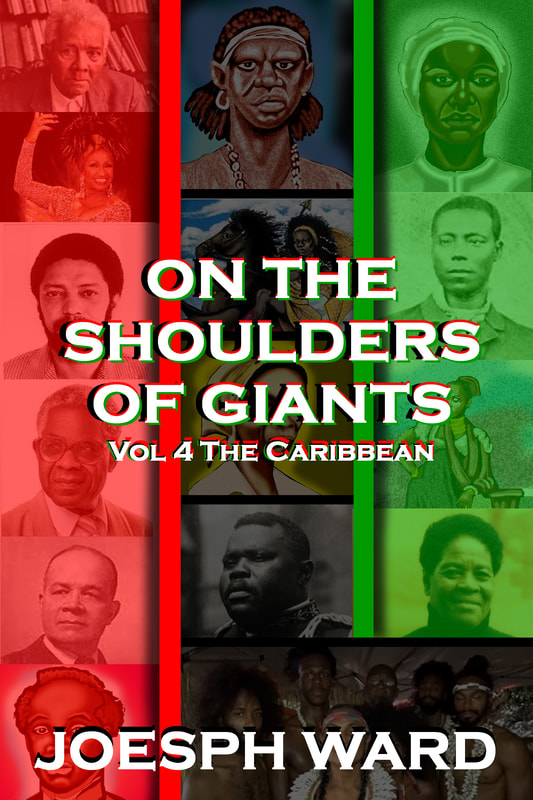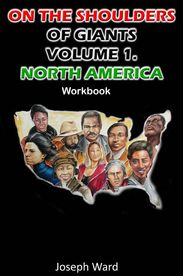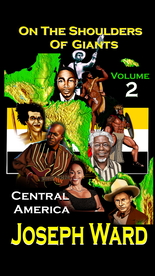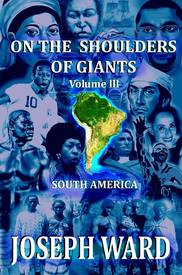|
September 9, 1934 Wilsonia Benita Driver was born in Birmingham, Alabama to her parents Wilson and Lena Driver. Lena Driver died when Sonia was around a year old, she and her sister were raised by their paternal grandmother until she passed away. From then on they would live with various relatives before moving to Harlem, New York with their father in 1943. Sanchez would begin to write after her move to Harlem; it is said that she began writing to help cope with the feeling of isolation. Sanchez’s writing would lead her to graduating from Hunter College in 1955 with a Bachelors of Arts. She would continue her postgraduate studies at New York University, where her concentration was poetry. Sanchez was able to create a writer’s workshop in the Greenwich Village area of New York. The workshop attracted such writers as Amiri Baraka, Nikki Giovanni, and Etheridge Knight. She was also able to form the “Broadside Quartet;” a guild of ambitious talented writers with something to say. Sanchez would meet and marry Albert Sanchez a Puerto Rican immigrant, the two remained together for a short time before divorcing. In 1968 Sanchez would marry fellow poet and activist Ethridge Knight and the couple would have three children. It is stated that Sanchez’s poetry in the 1970’s was heavily influenced by her experience as a mother. During the 1960’s Sanchez believed in and supported the idea of integration for America. She would be a mighty supporter of integration until she heard Malcom X speak about black economic self-sufficiency. She began to speak and write more about African culture, African heritage and black liberation around the world. She was quickly labeled as a separatist and someone who supported a black hate group. Sanchez ignored her critic’s and continued to uplift her people. She is credited as one of the first writers to incorporate “ghetto impressions” or Africa-American linguistic expressions into her work. In 1969 she published a book of poems titled Homecoming, which addressed the racial issues of the day. Early in Sanchez’s career she taught 5th grade at the Downtown Community School in New York City until 1967. She also became a University Professor, teaching at eight Universities across the country. While working as a professor at the University of Pittsburg, she was instrumental in implementing a course on the study of black American women. This was very controversial and groundbreaking for the University because it did not have a course on the study of women in general. Sanchez would leave the “Broadside Quartet” during the 1970’s and pursued a career as a solo poet. Her style of poetry was becoming very popular and sought after; it would lead to her traveling to Cuba, China, the West Indies, and Europe to recite her poems. She would also become very popular on college campuses across the nation; reading her poetry to students across more than 500 college campuses. She would publish a number of poetry books including her book Homegirls and Handgrenades, which won the American Book award in 1985. Sanchez would write a number of plays including the following; The Bronx Is Next, sister Sonji, Uh, Huh: But How Do it Free us?, and Malcolm Man/Don’t Live Here No Mo’. She has received many honors and awards over her illustrious career, the Robert Creeley Award, the Frost Medal, the Community Service Award from the National Black Caucus of State Legislators, the Lucretia Mott Award, the Outstanding Arts Award from the Pennsylvania Coalition of 100 Black Women, the Peace and Freedom Award from the Women International League for Peace and Freedom, the Pennsylvania Governor’s Award for Excellence in the Humanities, a National Endowment for the Arts Award, and a Pew Fellowship in the Arts. She was appointed Philadelphia’s Poet Laureate by Mayor Michael Nutter, and served from 2012 to 2014. Ms. Sonia Sanchez, we stand on your shoulders. J.A. Ward. References:
https://www.poets.org/poetsorg/poet/sonia-sanchez http://soniasanchez.net/bio/ http://biography.jrank.org/pages/2700/Sanchez-Sonia.html https://en.wikipedia.org/wiki/Sonia_Sanchez
0 Comments
Claudia Vera Cumberbatch was born on February 21st, 1915 in Belmont, Port of Spain, Trinidad. In 1924 the Cumberbatch family moved to New York in search of a better life; the coca trade declined in the West Indies leaving families in poverty. The Cumberbatch family settled in Harlem, New York where Jones would attend Wadleigh High School in 1930. Tragedy struck the family as Claudia’s mother Sybil died of spinal meningitis in 1933 at the young age of 37. Two years later Jones would graduate high school despite the adversity her family faced. Though Jones’ family loved her, they were too poor to attend her high school graduation. Jones and her family were classified as immigrants and lived in poverty; both labels were seen as roadblocks and limited their access to information and career choices. She began working for a laundry service and in retail instead of attending college; little did she know her life would change very soon. While searching for her place in life Jones joined a drama group, she also began writing a column called “Claudia’s Comments” for a local journal in Harlem. In 1936, searching for organizations who were in support of the Scottsboro Boys, she became a member of the Young Communist League America. In 1937 she became a part of the editorial staff of the Daily Worker, until she became the editor of the Weekly Review in 1938. Jones would later become the editor of Spotlight, the journal for the American Youth for Democracy, formally the Young Communist League America. Shortly after World War II she became the secretary for organizations such as the Women’s National Commission, the Communist Party USA (CPUSA), and the National Peace Counsel in 1952. While serving as the secretary of the National Peace Counsel Jones became the editor of the editorial Negro Affairs. The most well-known piece of writing published by Jones was titled, “An End to the Neglect of the Problems of the Negro Woman!” The piece appeared in the Political Affairs Magazine in 1949; one of Jones’ most famous excerpts stated; “The bourgeoisie is fearful of the militancy of the Negro woman, and for good reason. The capitalists know, far better than many progressives seem to know, that once Negro women begin to take action, the militancy of the whole Negro people, and thus of the anti-imperialist coalition, is greatly enhanced;” because of her views Jones was label a “Marxist” and “intersectional.” Later Jones and the CPUSA began organizing speaking engagements throughout the country, their activities would causes suspicion and eventually lead to her incarceration in 1948. While incarcerated Jones was faced with deportation for violating the McCarran Act. They were suspected of attempting to install a totalitarian dictatorship. Several witness testified against her and she was a self-identified member of the party since 1936, she was found guilty and ordered to serve prison time and face deportation in 1950. In 1951, at the age of 36 Jones was imprisoned where she suffered her first heart attack. Adding insult to injury Jones was later found guilty along with others for violating the Smith Act, her conviction was labeled was activities against the government. They were refused an appeal by the Supreme Court and Jones served a year and a day long prison sentence in West Virginia. In 1955 she was released from prison but was still facing deportation from the United States. British colonial governor Major General Sir Hubert Elvin Rance refused to allow Jones entry into Trinidad & Tobago; he considered her to be a problem. Jones was ultimately allowed to reside in the United Kingdom on a benevolent basis, as long as she agreed to no longer challenge her deportation. She arrived in London on December 21st 1955, at this time the British African-Caribbean Community was expanding. She was eager to find individuals in London who shared her political party views; what she learned was black women in London were not treated well by the Communist. Racial discrimination and segregation plagued the streets of London summarily to what Jones experienced in Harlem. She quickly realized that the African-Caribbean communities lacked unity; she took action by becoming active within the African-Caribbean community, helping the members to gain access to resources and human rights. Jones gained the support of many influential people such as Paul Robeson as she fought the structural racism inflicted upon her people. She opposed the Trade Union Congress vigorously; her message took her to countries such as Japan and Russia fighting against inequality. In the 1960’s Jones would lead a campaign against the 1867 Immigration Act; the act places unequal treatment on non-white immigrants entering the United Kingdom. On December 24th 1964 Claudia Jones died at the age of 49 due to a heart attack. She was buried in London in a burial plot next to Karl Marx who she was very fond of. Jones was named one of Britain’s 100 Great Black Britain’s in 2003. She was more than just a woman; Claudia Jones was a force to be reckoned with. She fought for the freedom and equality of black people on two continents, endured tragedy and setbacks, but still found the will to continue to press on. Claudia Jones, we proudly stand on your shoulders. J.A. Ward Jandamarra was born in the early 1870’s sometime between 1870 and 1873, to the Bunuba Tribe in the Kimberley district of Western Australia. As a young boy Jandamarra was well known for his ability to ride horses, sheer sheep and shoot firearms. He learned these skills while living amongst William Lukin and other European settlers. He spoke English fluently and was well liked by all who knew him. William Lukin gave him the nickname “Pigeon” because of his frail features and graceful movements. At the age of 15 Jandamarra left Lunik and the other’s occupying Lennard River to return to his homeland. After returning to his home he was initiated into the traditional ways of the Bunuba people and mastered the skill of hunting. In 1889, Jandamarra and Ellemarra his tribesmen were arrested and charged with killing sheep. The charges against them were dropped after they agreed to take care of the police horses. Jandamarra was unaware that this decision would lead to trouble in his future. He took excellent care of the horses and became popular at the local Derby because of his skills. Jandamarra was exiled from his tribe for violating sacred law; he then left to live in Lillimooloora station. He began forming a relationship with a man named Bill Richardson who was a stockman. Jandamarra was unaware that this relationship would become tragic for his people. Richardson joined the police force and naturally recruited Jandamarra as a tracker for the force. Constable Richardson, an Aboriginal named “Captain” and Jandamarra formed a successful tracking trio. This was the first time the Europeans used Aboriginals to track their own people. Once again Jandamarra was gaining fame from the white man; this time his fame was gained from oppressing his own people. He once went as far as saving Constable Richardson from an attack by a fellow Aboriginal. One night as Constable Richardson slept Jandamarra shot and killed him, he then released 16 Aboriginals who Richardson captured. The men formed and militia and quickly began fighting back against oppression. Their first victory was against a stock party which they killed its members and seized their weapons. Using the skills he gained over the years, Jandamarra planned a strategy to recapture their land from the white men. The police force learned of the uprising and ordered their men to fight back; they retaliated by killing many Aboriginals. In 1894, a militia of 50 Aboriginal Warriors fought fearlessly against the whites at Windjina Gorge. During the battle Ellemarra was killed while Jandamarra was severely wounded. He only just escaped the battle and sought refuge in the caves of the land; the Bunuba people believed he held supernatural powers because he escaped death. After two years of hiding in the caves Jandamarra raided the Lillimooloora police station; the raid surprised the police because everyone thought he was dead. The raid was unsuccessful because most of the Aboriginal warriors were deceased or arrested. In 1897 Jandamarra led his last raid; he invaded the Oscar Range homestead but was stopped by the police. Jandamarra managed to escape again temporally; he was tracked and killed by a fellow Aboriginal Minko Mick. The Bunuba eventually lost their land to the whites within a two year period and were rendered homeless. Jandamarra made some bad choices which affected his people negatively; but ultimately he understood that his people were more important to him than the affection of the white man. He found the courage the led the fight against the oppression of his people. He gave his people hope that they could defeat the white man and live in peace. Jandamarra, we proudly stand on your shoulders. J.A. Ward. Benjamin Obadiah Iqbal Zephaniah was born in Birmingham, England in 1958. He was raised in the Handsworth district of Birmingham, which is considered the “Jamaican district of Europe.” At the age of 13, Zephaniah stopped attending school because he felt it was neither inspiring nor beneficial to him as an aspiring poet. Zephaniah states that his poetry was heavily influenced by a brand of Jamaican music and poetry called “Street Politics.” He performed for the first time as a ten year old in him hometown Church. By the time he was fifteen he was a well-known teen poet in his hometown. He marveled many people because of his knowledge of local and international affairs, and his excellent ability to communicate his thoughts. As Zephaniah’s reputation grew he began to gain a flowing within the African-Caribbean and Asian communities. He also began to grow frustrated speaking out about injustices against black people in Europe. He felt that his message would have a more powerful affect if he performed in front of larger more diverse audiences. Zephaniah moved to London at the age of twenty-two where he published his first book, Pen Rhythm. His book was published by Page One Books which was an East London based publishing company. Page One Books was in support of Zephaniah’s poetry and the new movement happening in London. The book was fairly successful and it helped Zephaniah to start a poetic revolution. He is considered a “Dub Reggae Poet,” his style of poetry helped to revitalize the poetry scene in London, it also caught the attention of the mainstream media. It was a sweet victory for Zephaniah; many of the publishers who were seeking him out rejected his work in the past. When the youth of London swarmed the streets in the 1990’s protesting against inequality and injustice, Zephaniah’s influence was felt throughout the protest. The spirit of justice and freedom penetrated every aspect of the culture of London’s youth. Zephaniah became London’s most recognized poet, his ability to perform on stage and on the television made him a household name. His mission was to make poetry popular, popular enough that any youth who did not read, would develop a love for poetry and reading. Zephaniah was known for transforming his poetry into live events every time he performed. Zephaniah became very important by using his platform to bring attention to the issues that affected his people. During the 1990’s Zephaniah’s popularity increased as he was constantly in the public’s eye. His books, music and television appearances increased and his demand grew. He believes that the oral tradition of Africa never dies in the artist. In 1991 he held a performance on every continent within a 22 day period. In 1982 Zephaniah was the first artist to perform with the Wailers after the death of Bob Marley. The song was a tribute to Nelson Mandela on Zephaniah’s Rasta LP. Mandela was able to hear the song while imprisoned, once released he requested a meeting with Zephaniah. The two build a relationship that allowed Zephaniah to teach the children of South Africa. In 1996, Zephaniah also hosted Mandela’s Two Nation’s Concert held at Royal Albert Hall. His next step was to release a children’s book of poetry titled Talking Turkeys. The book was so popular that it needed an emergency reprint to meet the demands. Talking Turkeys topped the bestselling children’s book list for three weeks. In 1999 Zephaniah wrote a book for teen’s titled Face, which was the first of four novels in a series. He is an honorary patron of The Vegan Society and often advocates for the rights of animals. From 1998 to 2008 Zephaniah received honorary doctorate degrees from, The University of North London, The University of Central England, Staffordshire University, London South Bank University, The University of Exeter, The University of Westminster, and The University of Birmingham. He was considered number 48 on Time Magazine’s list of 50 Greatest Postwar writers. Dr. Benjamin Zephaniah, we proudly stand on your shoulders. J.A. Ward. In 690 BC Taharqa was born in Nubia as a member of the Royal family of the kingdom of Kush. He was the fifth ruler of the 25th Dynasty which was an African lead dynasty. Taharqa is regarded as the last pharaoh to unite the lands of Nubia; he is also regarded as the pharaoh to lose the lands to the Assyrians. Taharqa was the son of Pharaoh Piankhi and Abar the Queen of The Sudan. For twenty six years he ruled Egypt. His reign started in 668 BC after the death of his brother Shabakta. After becoming Pharaoh he spent a considerable amount of time rebuilding Egypt and venerating the God Amon. He then moved his throne to the Delta of Tanis; this move helped him keep an eye on his Asian neighbors. As the new Pharaoh, Taharqa faced a well-oiled machine in the Assyrian Army, led by Esarhaddon at the Sinai Desert, and was defeated in 671 BC. Taharqa lost control of Memphis and Lower Egypt; the Pharaoh fled to Upper Egypt with what was left of his army. In 673 BC Taharqa returned to Lower Egypt with a rebuilt army and defeated Esarhaddon, regaining control of the Delta area. Shortly after Esarhaddon’s successor faced Taharqa and defeated his army, which never again tried to regain Lower Egypt. Taharqa, as the second to last male Pharaoh of Egypt’s 25th Dynasty helped Egypt maintain its rich African culture for nearly 1,000 years. Taharqa built a plethora of temples in Cush, along with monuments at Karnak, Thebes, and Tanis. For at least eight of his twenty six year reign as Pharaoh, Taharqa fought off the oppression of the Assyrians, and promoted the beauty of the culture of his people. Egypt flourished under his reign, he is very important because of his ability to maintain Egypt’s culture. Their culture was able to be passed on to his nephew and lastly Cleopatra. The 25th Dynasty is the last of the African ruled dynasties. Taharqa helped black Egypt survive and became a formidable foe to the Assyrians. He is also famous because of his mention in the Holy Bible; Kings 19:9 and Isaiah 37:9. Taharqa fought hard for freedom of his people. He loved his people and their land dearly. Pharaoh Taharqa, we proudly stand on your shoulders. J.A. Ward. December 8, 1902 Wifredo Lam was born in Sagua la Grande, Cuba to Liam-Yam his father and Ana Serafina Catilla. His father was born in the Canton Providence of Southern China, and his mother was of Afro-Cuban descent. His family settled in Havana, Cuba in 1916, where he attended the Academia de San Alejandro. Lam attended the Academia until he graduated in 1923, following his graduation he attended an art exhibition at the Salon de Bellas Artes, Lam was inspired by his trip to the exhibition and made his mind up to become a painter. Later in the year Lam was awarded a grant to study art in Spain; he accepted the award and parted for Spain as a virile twenty-one year old. His fourteen year stent in Spain was very rewarding, while in Madrid he learned about modern art, and studied the great painters of Spain such as Diego Velazquez, Francisco Goya, Hieronymus Bosch, and Pieter Brueghel the Elder. Lam met adversity in 1931, his wife and son died of Tuberculosis, he dealt with grief in his own artistic way. Lam produced a number of paintings titled mother and child in honor of his lost wife and son; he also sought the company of his friends and got involved with political organizations. Lam was able to join the Republican force in their fight against Francisco Franco; he gained admission to the force with the help of a friend and contributed by creating anti-fascist posters and working in the munitions factory. It is said that his painting La Guerra Civil was inspired by the violence of the Cuban Civil War. In 1936 Lam met his second wife Helena Holzer; he would later leave Spain for Paris, where his luck got even better. While living in Paris he would meet and befriend Pablo Picasso, who would introduce him to important poets, painters, and art critics; the most important person at the time he met was Pierre Loeb. In 1939 Lam held his first solo painting exhibition at the Galerie Pierre, Loeb is the owner of the Galerie. In Marseille, France, Lam gathered with contemporaries at the Villa Air Bel where he produced his series of ink drawings that would become his signature style, which are hybrid figures. From 1941 to 1947, he would perfect his style while living in Cuba. Lam began attending Afro-Cuban rituals with his friends; these rituals would have an influence on his art during this period he would paint his most notable piece La Jungla. 1942 was considered his most productive year; he made over a hundred paintings, and had exhibitions at the Institute of Modern Art of Boston, Museum of Modern Art of New York and the Galerie Pierre Matisse. 1946 Lam and his wife took a trip to Haiti and his time on the Island helped shape his work and style as an artist. He felt that his contact with African culture enhanced his work; he states that he was greatly influenced by African poetry. Lam appeared in publications such as VVV, Instead, Art News and View; he also held exhibitions in the United States, Haiti, Cuba, France, England, Mexico, Moscow and Prague. Lam moved to Paris after the divorce of his second wife, shortly after he would meet his third wife Lou Laurin and the two married in 1960. Lam would later win the Grand Prix of the Havana Salon; later in 1958 he was named a member of the Graham Foundation for the Advanced Study of fine Art in Chicago, Illinois. In 1964 he was awarded the Guggenheim International Award. Lam’s career was filled with change and influence, he had a chance to meet and gain inspiration from some of the world’s most gifted artist, in 1982 Lam died but left an amazing legacy. He was influenced by his African roots and expressed it within his work; he created paintings to show his disagreement or support of the political events taking place in his native land of Cuba. Wifredo Lam was innovative, daring and a true student of art and life; Mr. Wifredo Lam, we proudly stand on your shoulders. J.A. Ward. A member of the Theban royal line and the son of Pharaoh Tao II, Ahmose I became the founder of the 18th Dynasty of Egypt which is often referred to as the greatest of the Egyptian dynasties. At the age of 7 Ahmose’s father was killed, and at the age of ten his brother having only ruled for three years, died of unknown causes. Afterwards, Ahmose assumed the throne and gained the title of Neb-Pehty-Re, meaning “the lord of strength is Re”. During his reign, Ahmose I was able to expel the Hyksos which was something that his father and grandfather were not able to accomplish. This success allowed for the 18th Dynasty to become an all-African ruled dynasty. Ahmose I restored the Theban rule, Egyptian culture and politics, and reasserted Egyptian power in its former territories of Nubia and Canaan. He also reopened quarries, mines and trade routes. Massive construction projects began to take place which allowed for the building of the last pyramid built by native Egyptians. Ahmose I was a visionary, a brave nationalist and a lover of his people and his culture, his bravery opened the doors for an African centered Egypt until the fall of the 18th dynasty. Ahmose I stood for justice and freedom which he displayed by removing the foreign invaders known as the Hyksos. He showed pride and courage to free his people from oppression and inspired his people to live free and be proud to be African. Ahmose I, we proudly stand on your shoulders. J.A. Ward. |
Details
Categories
All
Click Here to join our mailing list
|
Contact Us: |
Connect With Us |
Site powered by PIT Web Design

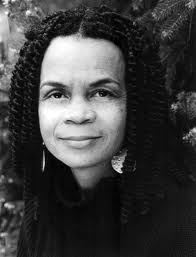
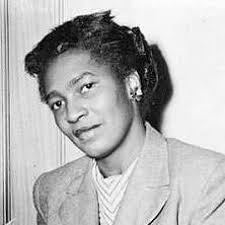
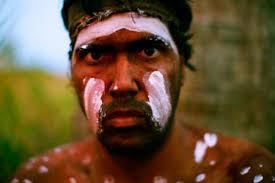
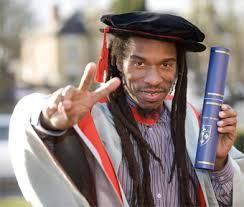
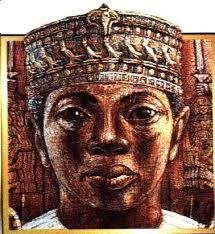
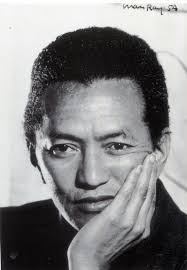
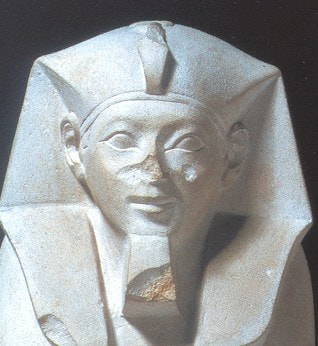
 RSS Feed
RSS Feed
